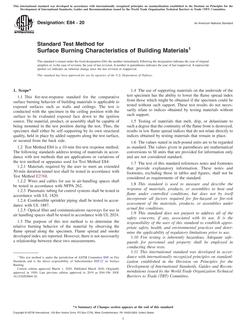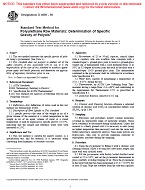1.1 This test method was designed to evaluate an engine oil’s resistance to aeration in automotive diesel engine service. It is commonly referred to as the Engine Oil Aeration Test (EOAT). The test is conducted using a specified 7.3L, direct-injection, turbocharged diesel engine on a dynamometer test stand. This test method was developed as a replacement for Test Method D 892 after it was determined that this bench test did not correlate with oil aeration in actual service. The EOAT was first included in API Service Category CG-4 in 1995.
Note 1 – Companion test methods used to evaluate engine oil performance for specification requirements are discussed in the latest revision of Specification D 4485.
1.2 The values stated in SI units are to be regarded as standard. No other units of measurement are included in this standard.
1.2.1 Exception – Where there is no direct SI equivalent, for example, screw threads, national pipe threads/diameters, and tubing size.
1.3 This standard does not purport to address all of the safety concerns, if any, associated with its use. It is the responsibility of the user of this standard to establish appropriate safety and health practices and determine the applicability of regulatory limitations prior to use.
1.4 This test method is arranged as follows:
| Section | |
| Scope | 1 |
| Referenced Documents | 2 |
| Terminology | 3 |
| Summary of Test Method | 4 |
| Significance and Use | 5 |
| Apparatus | 6 |
| Reagents and Materials | 7 |
| Preparation of Apparatus | 8 |
| Calibration | 9 |
| Test Procedure | 10 |
| Determination of Test Results | 11 |
| Report | 13 |
| Precision and Bias | 14 |
| Keywords | 15 |
| Engine System Drawings | Annex A1 |
Product Details
- Published:
- 12/01/2008
- Number of Pages:
- 12
- File Size:
- 1 file , 320 KB
- Redline File Size:
- 2 files , 590 KB


